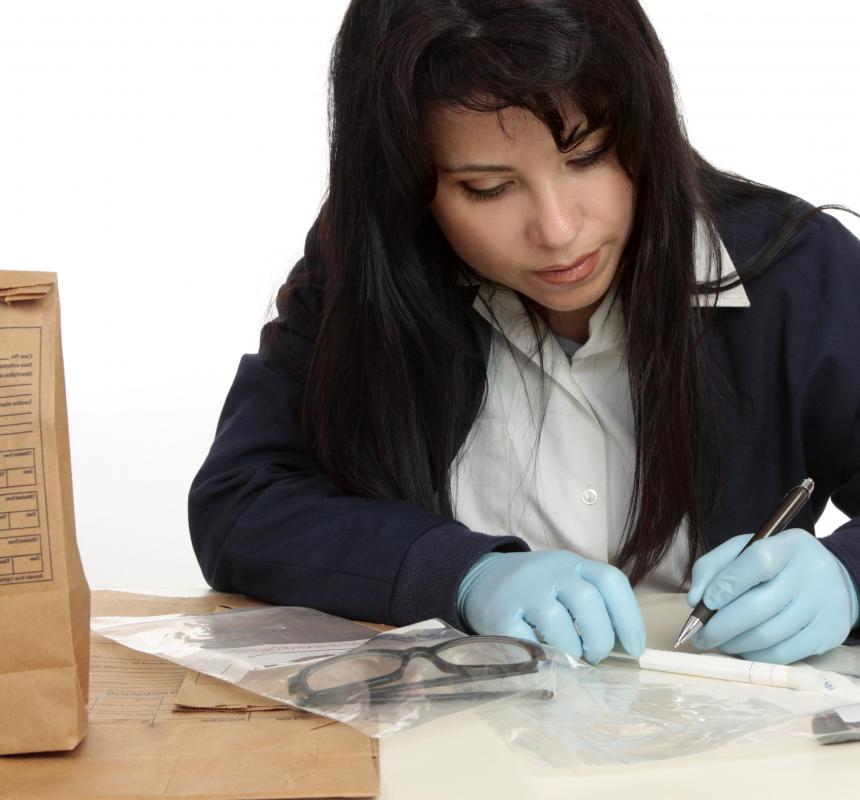At WiseGEEK, we're committed to delivering accurate, trustworthy information. Our expert-authored content is rigorously fact-checked and sourced from credible authorities. Discover how we uphold the highest standards in providing you with reliable knowledge.
What is a Chain of Custody?
Chain of custody is a rule in evidence law that ensures that any evidence accepted by the court is acceptable and tamper proof. The party who wants to introduce evidence during a court proceeding has a duty to establish a chain of custody according to the rules of evidence in the jurisdiction. It’s not required for all types of evidence in most cases; it is mainly evidence that was seized or under the control of another. Many statutes require that certain elements be met when a party wants to establish a chain of custody. The main elements are that the evidence is what the party claims it to be, that it has been in the continuous possession of each person who had control over it until it was presented at trial and testimony from the persons who had possession of it, and that the evidence remained in substantially the same condition until transferring it to another person or to the party offering the evidence. The evidence collector must also be a neutral party.
Juries and judges rely on legal evidence to make their decisions about liability in civil cases or to render a guilty or not guilty verdict. Evidence that’s tampered with, substituted, or unreliable can often lead to the wrong conclusion. Chain of custody rules in evidence law attempt to address the issue of entering only reliable evidence during trials so that the outcome of a case is reasonable. The elements in the statutes exist to establish the reliability of the evidence in order to help judges and juries make rulings and verdicts. Without chain of custody rules, the evidence offered may be suspect and can leave doubts about the final decisions that the courts make in trials.

The elements required to establish chain of custody also help to prevent fraud. To begin with, the party who offers the evidence needs to provide testimony that the evidence is what it is purported to be. For example, testimony that the evidence is the defendant’s blood sample helps to prevent the prosecutor from offering someone else’s blood sample. Another element that needs to be proved is that the evidence was in continuous possession of one or more persons until it was entered at trial. That testimony is often included to avoid alteration or someone swapping the real evidence for false evidence.

The evidence must often be in substantially the same condition as when it was seized. Testimony of each person who seized or had control over the evidence is often necessary to prove that it is basically unchanged. Chain of custody rules also require that the person who collects the evidence has no personal interest in the outcome of the trial or in the evidence. If the party is not neutral, then the opportunity for fraud may exist.
AS FEATURED ON:
AS FEATURED ON:













Discuss this Article
Post your comments